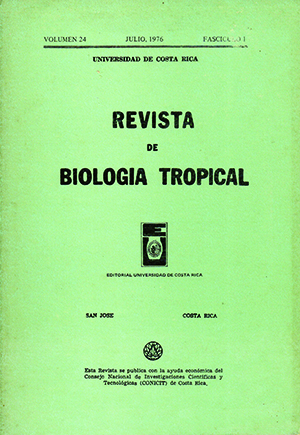Resumen
En los meristemas de Alnus jorullensis podemos observar perfectamente delimitadas las células de la túnica, las divisiones periclinales, anticlinales y oblícuas que darán origen a los primordios de la hoja y la diferenciación del procambio en forma acrópeta. En el cuerpo primario la parte más evidente es el parénquima poliédrico de células isodiamétricas, y la estela (una eustela). A nivel del nudo el sistema vascular primario presenta tres trazas y tres lagunas foliares. En crecimiento secundario los vasos presentan perforaciones escalariformes, puntuaciones opuestas areoladas, parénquima apotraqueal, rayos uniseriados o parcialmente biseriados y células secretoras con contenido aparentemente mucilagmoso. La madera se compone en gran parte de fibra-traque idas poco lignificadas.
Citas
Acosta, I. C. 1967. Descripción anatómica, propiedades físicas y algunos usos de 25 maderas de Costa Rica. Tesis, Mag. Se. Instituto Interamericano de Ciencias Agrícolas, Turrialba, Costa Rica. (Mimeografiado).
González, M. R. 1970. R elación entre el peso especifico y algunas propiedades mecánicas del Alnus jorullensis H.B . K. Tesis, Mag. Sc. Instituto Interamericano de Ciencias Agrícolas, Turrialba, Costa Rica. (Mimeografiado).
Hunt, I. S. 1967. Las propiedades y usos de la madera de Alnus. BoL Inst. Forestal Latinoamericano. Mérida No. 23, 50 p.
Metcalf, C. R., & L. Chalk 1950. Anatomy of the Dicotyledons. 2a ed. Claredon Press Oxford, Vol n, 1. 300 p.
Rodríguez, R.,L. 1957. Systematic anatomical studies on Myrrhidendron and other woody Umbellales. Univ. Calif. Publ. Bot., 29: 145-318.
##plugins.facebook.comentarios##

Esta obra está bajo una licencia internacional Creative Commons Atribución 4.0.
Derechos de autor 1976 Revista de Biología Tropical


